Opinions are one thing that the world is not short on, and no matter the topic, there are thousands of opinions out there–drag in opinions on barbecue and things can quickly turn into the wild west.
What temperature to smoke a brisket at is one that is definitely up for debate and we’re calling in the best pitmasters to answer the question once and for all.

According to the pros, the 3 main temperatures that people smoke brisket at are 225°, 250°, and 275° Fahrenheit. We consider lower temperatures to be right around 225° and higher temperatures to be around 250° and 275° degrees F.
This guide will strictly be about how long to cook brisket at 250° F.
How Long to Cook Brisket at 250?
You’ll need to cook brisket at 250° for about 30-40 minutes per pound. Upping the temperature to 250°, from the established tried and true rule of smoking at 225°, has some shocking and actually delicious results!
You see, when we smoke brisket at 225° F the timing is around 1-1.25 hours per lb. Shockingly at 250°, you’re cutting about 50% of the cooking time off!
Here is something that we feel needs to be kept in mind as you’re reading this and planning your first or 50th brisket. We use the words cook and smoke interchangeably, so please do not ever interpret “cook” as “cook in the oven”. A brisket is never “smoked” or “cooked” in the oven…ever. I know some people that still do that and somehow they don’t realize that they’re just making roast beef and not smoked beef brisket! If you have a friend or family member that does this, politely encourage them to put their brisket on the smoker versus cutting them out of your family tree.
How To Cook A Brisket At 250°
We’ll start the entire process by selecting the right cut and grade of beef.
How do I Choose the Best Brisket?
The 1st step in getting the best results in your cooking process is starting with a whole brisket and not just the brisket flat that you may see in stores.
A brisket flat is actually only half of the brisket and it’s the leanest part of the muscle. It may seem tempting to go with the brisket flat in your local grocery store because of the more manageable-looking size, but do yourself a huge favor and steer clear of the brisket flat for now.
Whole packer briskets or a full packer brisket are the best way to go in order to get a juicy brisket that will offer consistent and excellent results.
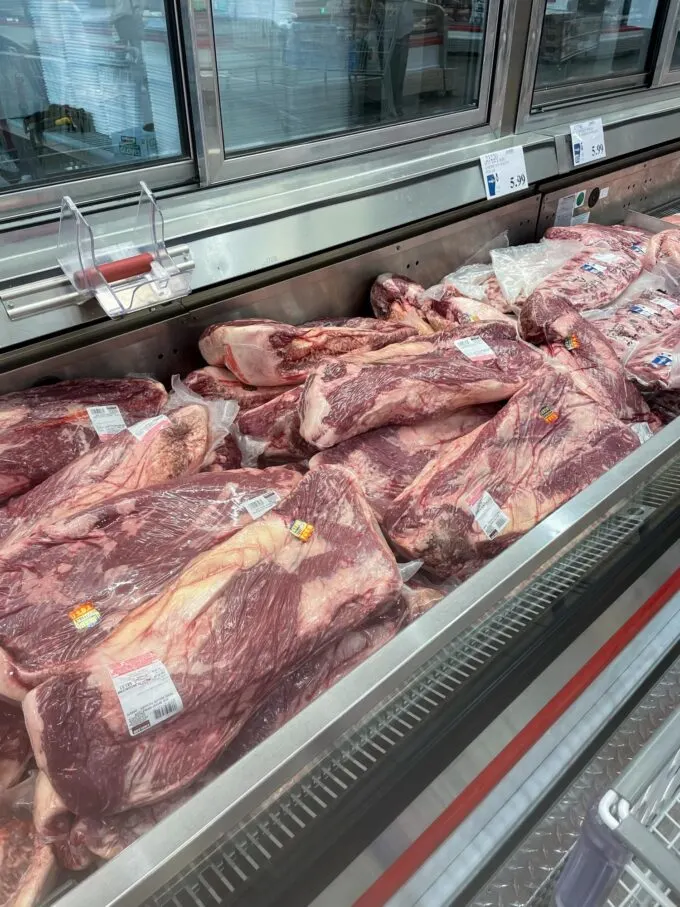
You know how your parents always told you that getting the best grades in grade school would give you the best chance of getting into a great college and getting an awesome job? Well, grades can matter equally as much when it comes to setting yourself up for success in smoking your brisket.
You have options of Choice, Select, Prime, and Wagyu when it comes to your full brisket. All grades can be cooked at 250° but the higher grades tend to be more forgiving at high temperatures.
Our favorites are Prime and Wagyu due to the extra marbling and we prefer these higher grades when cooking a brisket at 250°.
A great way to ensure good results every time is to pay the extra money for a Prime or Wagyu brisket which contains finer and more richly distributed ribbons of fat. Fat flavors the beef as it melts and offers more forgiveness for beginners experimenting with smoking at these higher temperatures.
The reason we do not choose Select or Choice is because of the lesser degree of marbling running throughout the 2 muscles that make up a packer brisket. One of those muscles is the flat or lean part of any brisket, and the other side is the point, which is where you get the beef for your chopped beef brisket sandwiches (because it is so tender and full of flavor due to the high degree of marbling).
You can easily get prime brisket at Sam’s Club or Costco. You can get them at your local butcher as well. (Our experience at local butcher shops is that prime grade is sold at a significantly higher premium when compared to Sam’s or Costco.)
When we’re doing a smoked brisket for a holiday such as Christmas, we’ll spring for Snake River Farm’s Wagyu grade beef brisket. It’s the best brisket we’ve ever made because of the excellent marbling running throughout the thickest part of the brisket, and a real special occasion treat.
Now that we’ve run through how to select the brisket itself for your brisket cooks, we’ll go over how to prepare it for your smoker.
How do I get my brisket ready for the smoker?
First, a little bit of anatomy on your brisket. There are 3 important areas to know about when it comes to your brisket. You have the flat, the point, and the fat cap.
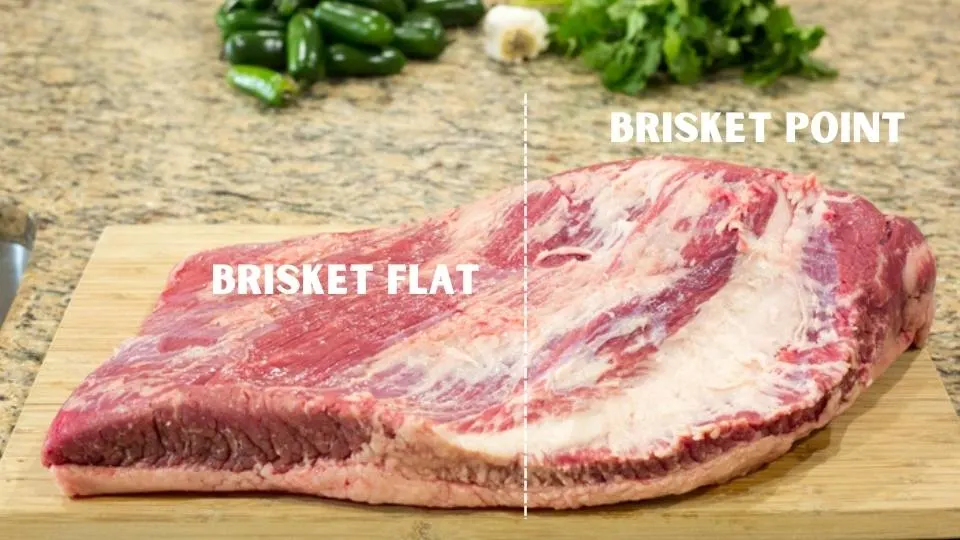
The flat is the meat side or what people call the lean meat of the brisket. There won’t be as much marbling in the flat as in the point. It’s easily distinguishable from the point of the brisket because it’s thinner and flat.
The point curves up the opposite side and is rich in fat deposits within the meat making this side extra juicy.
The fat cap refers to the side of the brisket entirely covered in fat. On this website, we just refer to the other side as the meat side.

When anyone refers to trimming a brisket, they’re mainly referring to trimming the excess fat on the fat cap and just a tiny bit of silver skin on the opposite side (we just call it the meat side) which will help your dry rub stick to the beef itself.
Pro Tip: I will tell you from experience that you do not want to trim a room-temperature brisket because it’s terribly slippery! It will be super flexible and slide all over the place while you trim it. Instead, put your entire brisket in the freezer (still in its original cryovac plastic) for about 30-45 minutes. This will give the brisket plenty of time to firm up and trimming will be a breeze even if you do not have a razor-sharp knife.
And we don’t recommend using a dull knife but unfortunately, sometimes it happens….this is the tool we use to make our knives razor-sharp
(Links are affiliate links to products we think are helpful and we may receive a small commission, at no cost to you, if purchased.)
Trimming the Meat Side
The general rule of thumb when it comes to trimming the meat side of your brisket is to trim everything white (fat) to where you see pure, bright red beef.
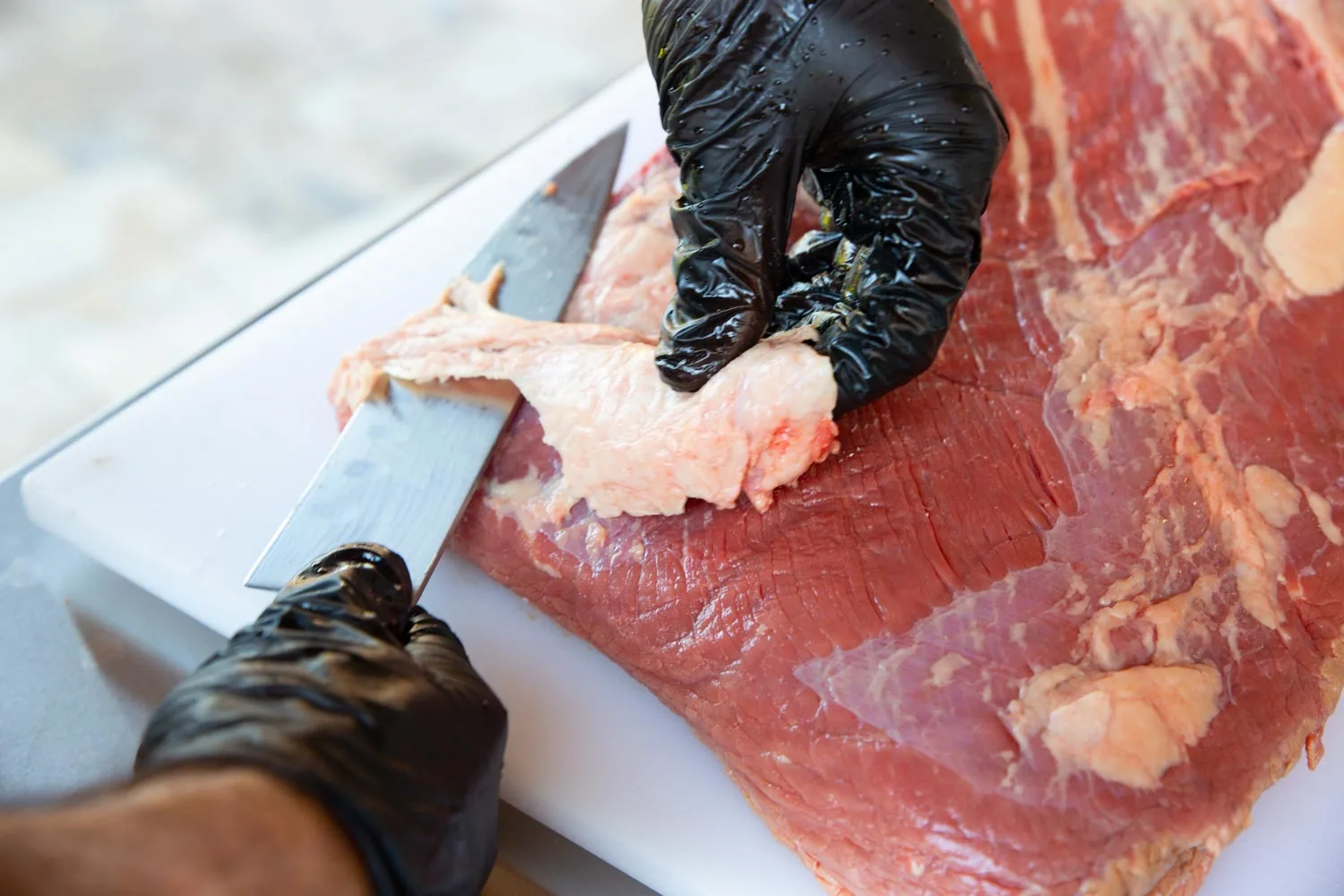
After you’ve trimmed all of the cloudy silver skin from the flat or top portion of your brisket, you’ll move on to trimming the fat. At this point, we’re going to stay on the top and side of the brisket and not move to the fat cap yet.
Trimming the Fat Cap
There are 2 ways of trimming the fat cap side of your brisket and the deciding factor in our opinion is based on where your heat source comes from.
We use a pellet grill and our heat comes from underneath the brisket, so we do not trim the fat cap very much. This is sacrilegious to some people and that is perfectly fine, to each their own. We love smoking brisket this way because it keeps our brisket protected from the radiant coming from below. This helps in keeping our brisket extremely juicy and much less prone to drying out.
The alternative way to trim the fat cap is leaving 1/4″ of fat on the fat cap.
This is how pitmasters who smoke fat side up will trim their brisket. When smoking with an offset smoker where the fire source is far far away from the brisket, the low temperatures make this a very good option.
Those who choose this method will argue the fat drips down on the brisket throughout cooking, basting the brisket while smoking.
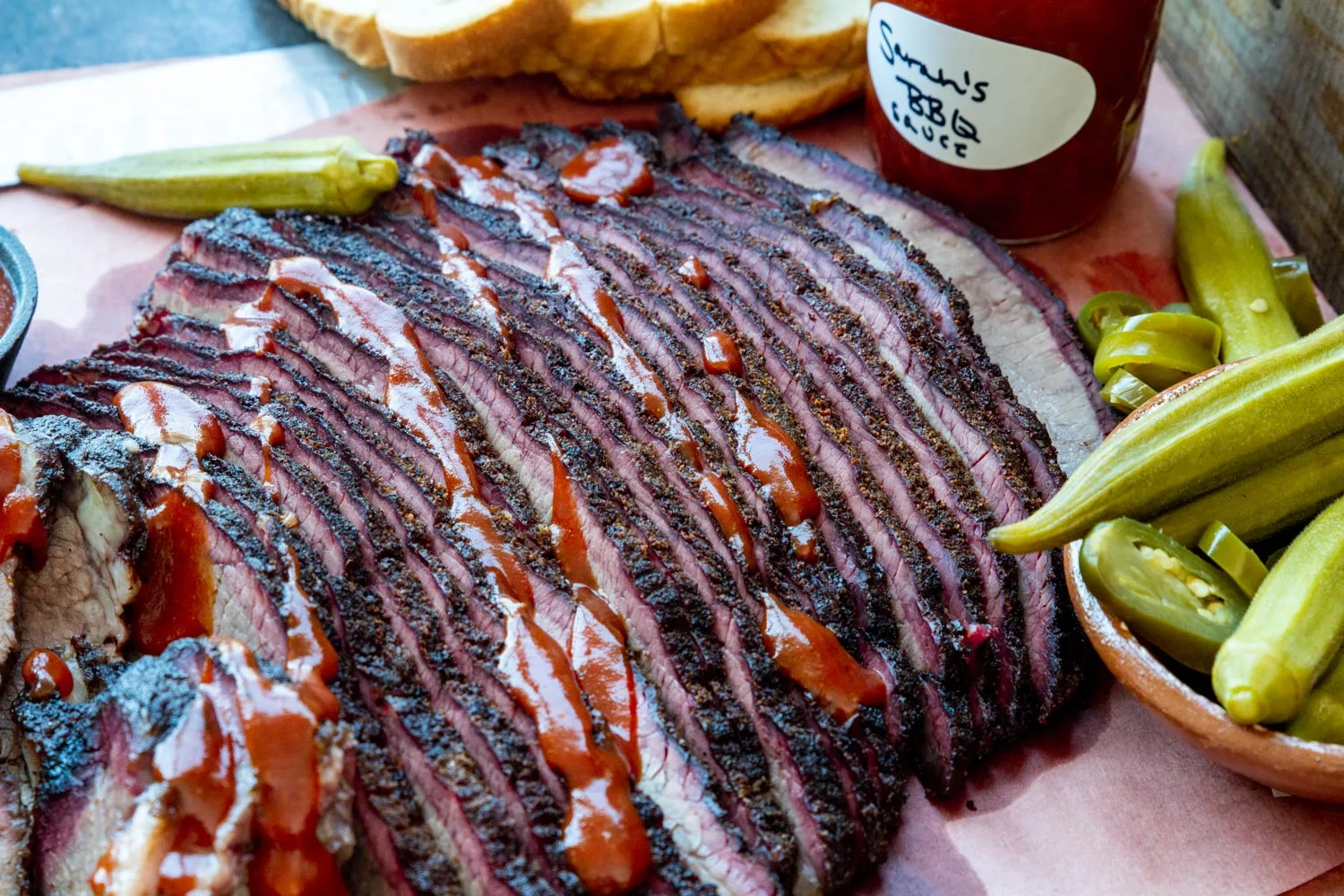
What to Know About Brisket Rubs
Enough about trimming and onto the dry rub!
We’ve used all sorts of beef barbecue rubs that include black pepper, salt, garlic powder, onion powder, brown sugar, paprika, and cayenne pepper. (We’ve even seen some people use liquid smoke and Worcestershire sauce which is really strange and interesting to us!)
What we’ve come to love is a simple combination of kosher salt, black pepper, onion powder, and garlic powder in nearly equal parts. We keep our brisket rub recipe here.
One mistake we see many brisket newbies make is thoroughly covering their brisket in dry rub.
We evenly spread our rub over the surface so that there is plenty of meat surface area for the smoke to penetrate and for the heat to create that delicious bark candy created by the Maillard reaction. On the fat cap side, it’s not a big deal to put much rub, if any, on it and you’ll learn why later.
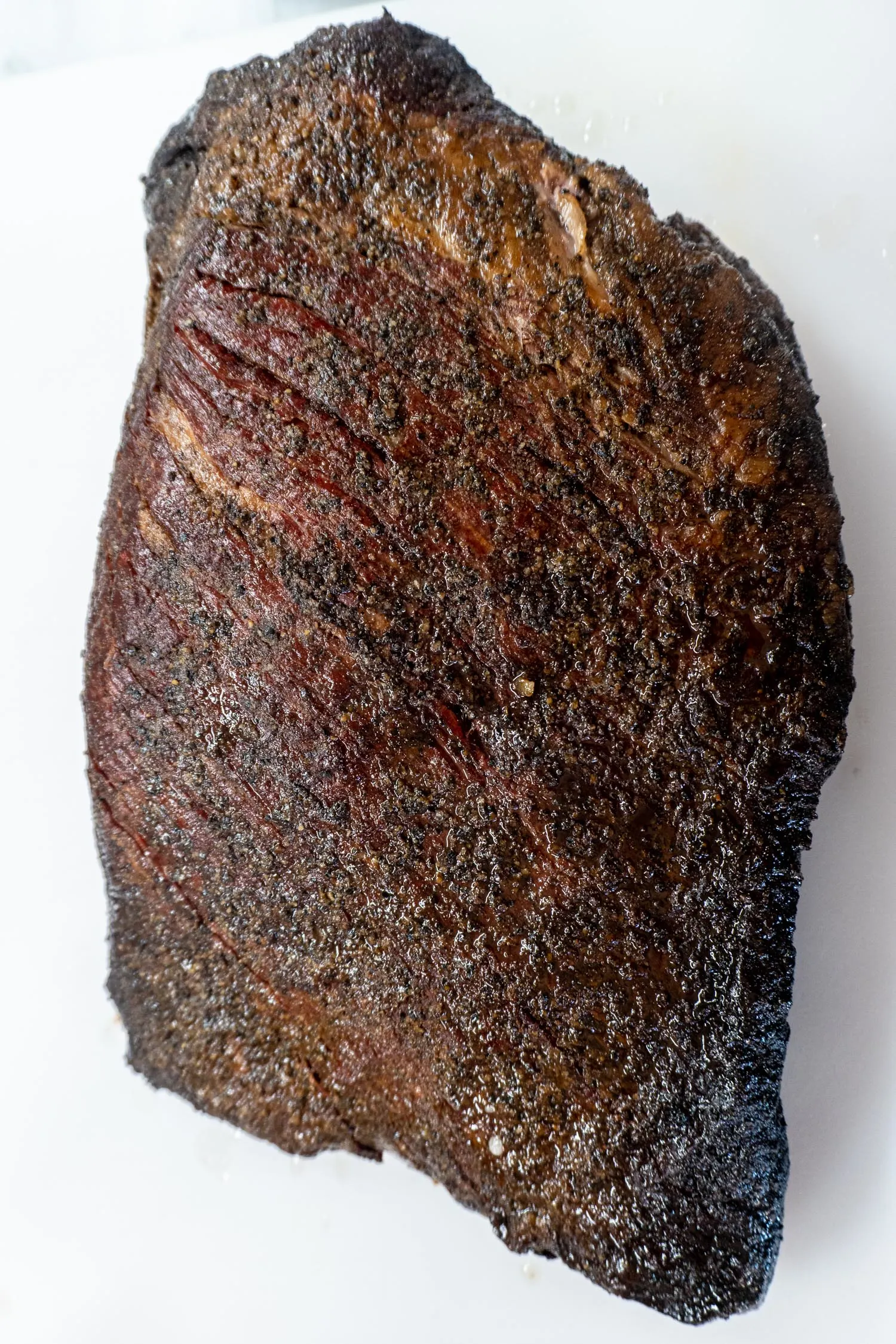
How do I Prepare my Barbecue Smoker?
Using A Water Pan (Especially at High Temps)
With a cooking temperature of 250 degrees Fahrenheit, a water pan is an absolute necessity. Water pans come in many shapes and sizes and we either use a disposable aluminum pan or a dedicated bread pan.
Water pans are great for temperature control as the humidity in the air will help distribute heat more evenly. So whatever kind of smoker you have and whatever the brand is, your water pan will help keep the ambient temperature in your smoker very close to 250 degrees.
Also, barbecue really needs humidity for bark creation and to help smoke cling to and penetrate the meat. Being that we’re going to be smoking at the higher temperature of 250° it’s a good rule of thumb to use a water pan or you risk drying out your bark to a jerky-like consistency.
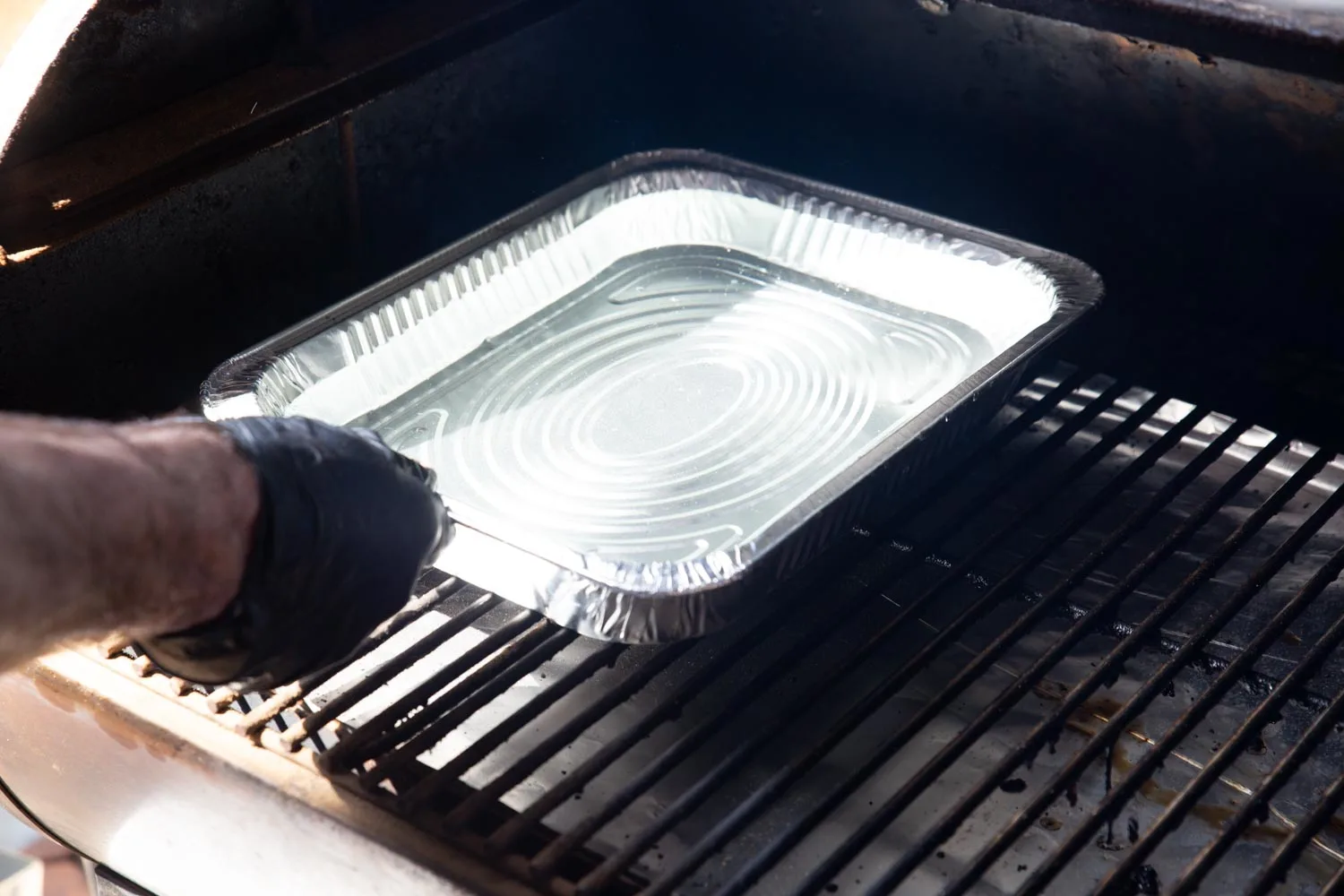
For those used to babysitting a brisket for a long time this lightning-fast process is bizarre but welcome…you’ve just got to keep the chamber full of moisture. Always position the water pan to the side of your brisket, not underneath which might steam off your bark.
Smoking The Brisket at 250
Now for the main event! Once you’ve followed the previous steps and brought the smoker temperature to 250 degrees, you’re ready to throw your brisket on your smoker. Fat side up or down is up to you. We of course recommend fat side down for pellet smokers and fat side up for offset smokers with the firebox far away from the brisket.
Once you’ve done that, you’re going to place your meat thermometer in the thickest cut of the meat and close your smoker. We want to keep that cook chamber at the right temperature (250° in this case) for as long as possible and help all of that smoke penetrate the meat and infuse it with the smoke flavor we all love.
You won’t have to spray it with our brisket spray since we have our handy dandy water pan creating the humidity inside for us and the brisket is going to be finished in half the time. The meat will also naturally cool itself when heated as a result of it tightening up and forcing the water out from the muscle. This is called evaporative cooling and is a natural process.
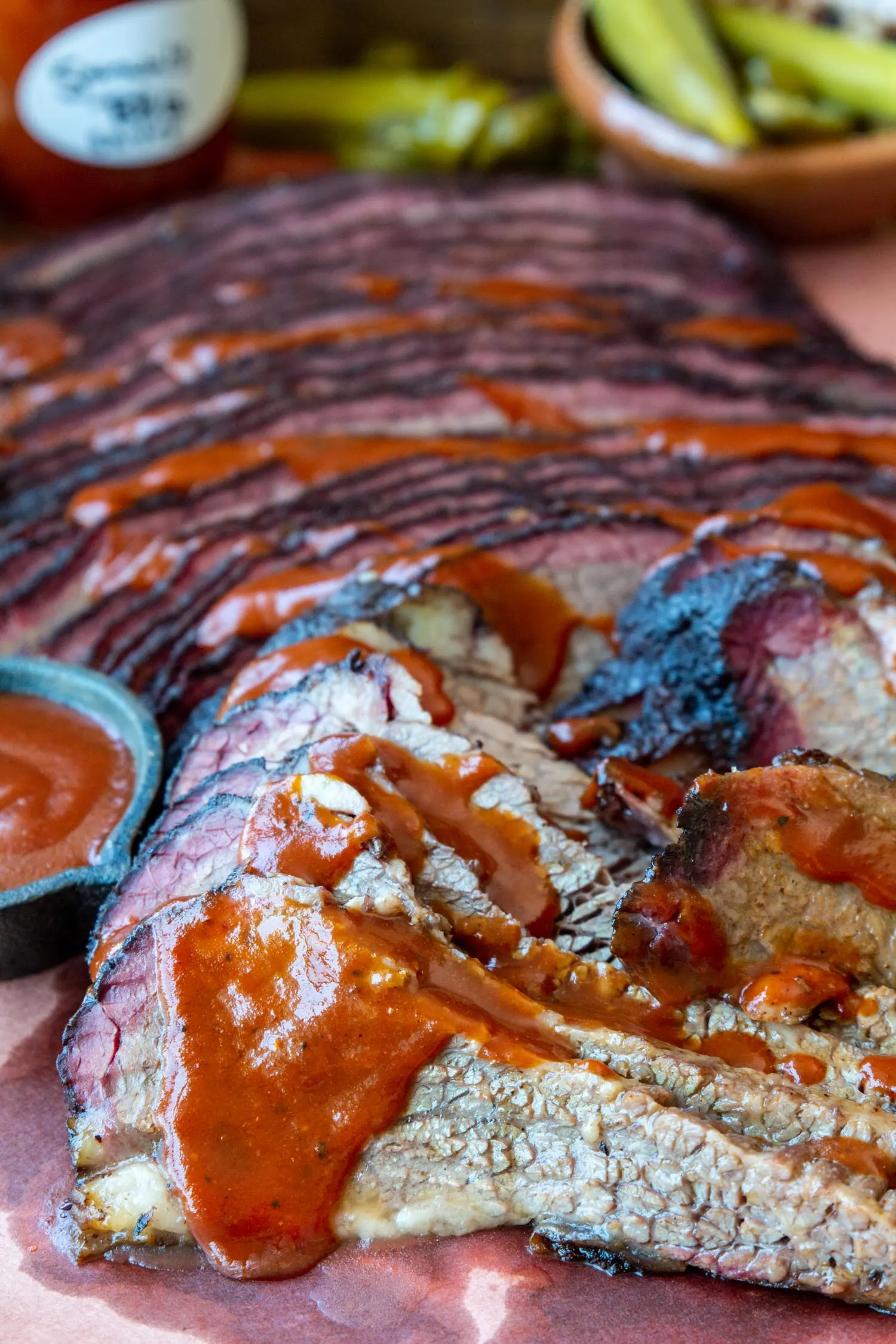
Compared to 225° slow cooking, the total cook time is going to be dramatically cut down.
We’re going from approximately 1 hr per lb brisket to 1/2 hr per lb brisket, a 50% decrease in cook time!
Once the internal temp of meat reaches 170° F, we’re going to double-wrap our brisket with pink or peach butcher paper that you can get <here> if you can’t find it locally. This is called the Texas Crutch and helps you get through the dreaded brisket stall in much less time than if you didn’t wrap it. We’ve had enough time for the smoke to penetrate the meat and now we need to help it reach an ideal temperature without going through the stall.
Some people use aluminum foil to wrap their brisket. I hate this because I feel like it dissolves the bark but to each their own. When you’ve put in all these hours of work it would be a shame to throw it away by wrapping it in aluminum foil because the brisket begins steaming and you could have done that in the oven to begin with. When you wrap with foil you make roast beef. Don’t get me wrong, I love roast beef just not when I’m smoking brisket!
After you’ve placed your peach butcher paper-wrapped brisket back on the smoker, we’re going to let it rise to the best temperature (in our opinion) approximately 197°.
The right temperature range for pulling the brisket can be anywhere from 190°-203°. It’s a window of time, not an exact number.
And now you’re ready for what we believe is the most important part of getting a competition-style tender brisket: The brisket rest
How Do I Rest The Brisket?
We rest our brisket in an insulated cooler probed with a Meater wireless thermometer monitoring the internal temperature of the brisket.
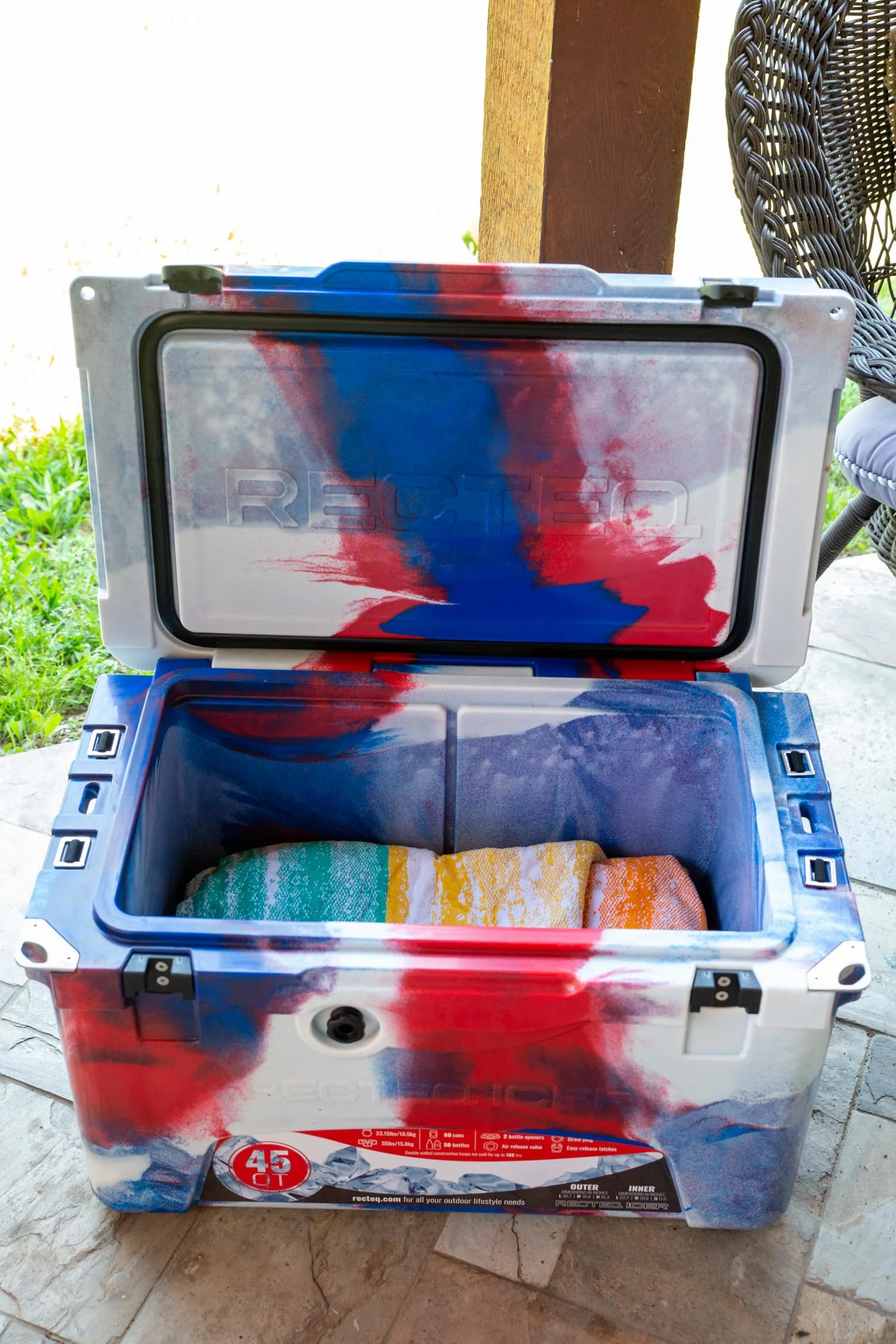
Doing this allows us to monitor the internal temperature for a super long rest where connective tissue will continue to break down for hours.
As soon as we remove our brisket, we keep it in the wrapping and then double wrap it in towels. You can use any full-size towels for this and then place the bundle into your insulated cooler or Cambro for 4 hours.
The brisket can be rested for about 1 hour and sliced if you are hungry, but the extra time really results in stupidly tender, succulent, and juicy brisket meat.
During this long rest, the connective tissue is going to keep breaking down, along with fat continuously rendering and evenly spreading back into your brisket.
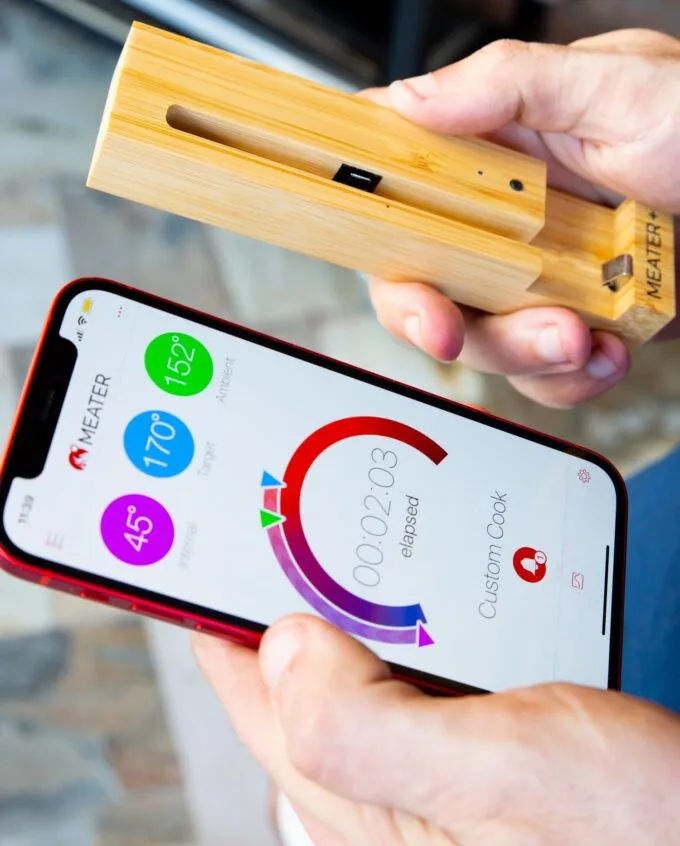
A major advantage of the Meater probe thermometer is watching the internal temperature of the meat on the app. This will tell you exactly what temperature the brisket is, avoiding any anxiety and letting the meat come down slowly to a low temperature.
After the rest, unwrap and slice. We serve smoked brisket with these favorite barbecue side dishes…
Have questions? Need help? Have an addition or a suggestion to a recipe? Drop me a comment below!
If you make this recipe, I would LOVE to see it!
Tag me on Instagram @UrbanCowgirl and use #UrbanCowgirl to be featured. 🙂
Follow us on Social Media using the links below!!

How Long To Cook A Brisket at 250
Smoking brisket at 250 degrees will finish in HALF THE TIME as a brisket smoked at 225 degrees. Sounds crazy. But it's true. After many test runs, we present the complete guide to smoking brisket at 250 degrees.
Ingredients
- 1 whole brisket (8-20lbs.)
- 1/2 c. beef barbecue rub or our Award Winning Brisket Rub
- You will also need butcher paper or foil, a water pan, wood chips or pellets, and a meat thermometer.
Instructions
- Insert a Water Pan into Smoker
- Preheat Smoker to 250 Degrees
- Place Brisket in Freezer for 30 minutes to stiffen (Leave in wrapping from the store), making it easier to
trim - Pull Brisket out of Freezer, remove wrapping, and trim the fat cap to 1/4 inch. and do any additional trimming that you like. Check out our full guides on trimming brisket.
- Dry off the moisture on the exterior of the brisket using paper towels
- Sprinkle beef rub on every surface of the brisket. Do not completely cover the brisket in rub, you want to see a bit of pink peeking through.
- Place Brisket in the smoker
- Insert Probe in the thickest part of the brisket
- Smoke brisket for 3 hours without opening chamber. Then, begin spritzing every 30-40 minutes with brisket spray. (We have a recipe on this blog or you may use beef broth, water, or apple cider vinegar.)
- Continue smoking until an internal temperature of 170 degrees. Double wrap with peach butcher paper.
- Re-insert the probe into the thickest part of the brisket (if you had to remove the probe to wrap it.)
- When the internal temperature reaches 195-197 degrees, pull the brisket off and double-wrap the already
wrapped brisket with towels, and place it in an insulated cooler or a 170-degree oven for at least 2 hours. - Unwrap, slice, and enjoy!
Nutrition Information:
Yield:
12Serving Size:
1Amount Per Serving: Calories: 96Total Fat: 6gSaturated Fat: 2gTrans Fat: 0gUnsaturated Fat: 3gCholesterol: 29mgSodium: 53mgCarbohydrates: 3gFiber: 0gSugar: 1gProtein: 8g
This nutritional information is provided as a courtesy as an estimate only. Consult with a dietician for precise estimates. This website makes no claims that the nutritional values listed are accurate.

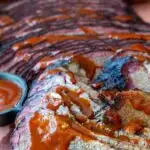
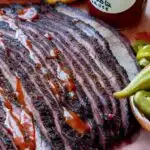
Dave
Tuesday 4th of July 2023
Hello, I have 2 flats that I am going to smoke. one is 3.75 lbs and the other is 3.61, Should I base my time on the larger one?
Sarah Penrod
Wednesday 19th of July 2023
I would always base the timing on the smaller piece so you don't dry it out. You can always cook longer if you need to but you can't go backwards once you've dried a piece of meat out.
Joseph Ochoa
Sunday 18th of June 2023
Hey Sarah, this is the first time I’ve made a brisket where the temp rose on a 12 pounder to 165 degrees in about two hours. My smoke temp was at 252 and the brisket was off to the side in a Weber kettle. I use the Thermoworks smoke alarm as a primary and a Theromorks pin as a secondary back up. The brisket was a choice. I spritz every hour and decided to wrap at 170. I didn’t really notice a stall. Any ideas what may cause this
Sarah Penrod
Sunday 18th of June 2023
Hey Joseph, were the probes inserted into the middle of the thickest part of the brisket? I don't know how it would be possible to rise to 165 in 2 hours unless the temp was being measured from the flat or the thinnest part of the brisket. Let me know how it turns out and make sure you rest it for as long as you can after it is done with the cook. That way it will render the fat for as long as possible. Let me know how it goes because this one sounds interesting!
Randy Blacketer
Friday 9th of June 2023
If I have a smaller brisket or maybe it's the half of a brisket that you mentioned, (5.65 lbs), will this method still work? Clearly I would have to adjust the timing, because at the rate of 1/2 hour per pound it's going to be overcooked by the 3 hour mark. Any advice? Thank you!
Sarah Penrod
Sunday 11th of June 2023
When you change the size of the brisket by such a large amount, I'd say do a test run anytime before the day you'll be making your brisket. I would honestly be worried about it drying out being such a small cut.
Where are you finding a brisket that is 5.65 lbs? I'd expect to see a brisket flat (the lean part of the brisket) be that size but not an entire brisket.
sean lewis
Sunday 22nd of January 2023
Hi Sarah!
I am currently following your guidance above, and yes, smoking a brisket as I write this. Curious about your comment ":Doing this allows us to monitor the internal temperature for a super long rest where connective tissue will continue to break down for hours."
I'm unsure what you mean by monitoring, since I'm not sure what you could see that is welcome, or alternatively what you could see that is unwelcome? Or is the monitoring to make sure that the temp isn't dropping too fast?
Thanks for your kind advice!
Sean
Sarah Penrod
Friday 3rd of February 2023
Hi Sean!
What I meant by monitoring is using our Meater Wireless Probe to monitor the internal temperature of the brisket while it is resting. We recommend resting it for at least 4 hours if at all possible but we've rested briskets for close to 10 hours when double-wrapped in towels and placed into an insulated-style cooler.
The main reason we're monitoring the internal meat temperature is to ensure it doesn't go below 140 degress F because that is the temp where bacteria can start to grow and nobody wants that! :)
Bryan
Saturday 14th of January 2023
I did not realize that the Jews, who have been cooking brisket in ovens since before Texas existed, were so wrong and offensive. Better spread the word that their kosher berisket doesn't deseve to be called brisket. Anything else that you think the Jewish people are doing wrong?
Eric Red
Monday 1st of May 2023
@Bryan,
What's your problem? None of that was said, mentioned, thought, implied, or even in the realm of this topic. Do you just pick fights for the sake of picking fights. You suck, especially hiding behind your computer screen. I guarantee you keep your mouth shut in public because you know your bullshit wouldn't be tolerated. Ass.
Jeffrey
Wednesday 22nd of February 2023
@Bryan,Wow,you've got a major hangup buddy. Nothing was said about the Jewish people or the way they spell or cook brisket.
TH
Wednesday 25th of January 2023
@Bryan, Ever listen to the Eagles? In specific their song 'Get Over It'? Really tired of people doing anything and everything they can to find ways to be offended, even when there is nothing to be offended about. “People get addicted to feeling offended all the time because it gives them a high; being self-righteous and morally superior feels good.” ― Mark Manson
Sarah Penrod
Saturday 14th of January 2023
Ummm...my family heritage is Jewish and I have close friends who live in Jerusalem. What are you talking about? Nowhere in this post does it attack Jewish culture or ancestry. This is a barbecue brisket recipe post on a barbecue website. If you make Jewish brisket in an oven that is an entirely different affair that I have not attacked one time, nor would I.